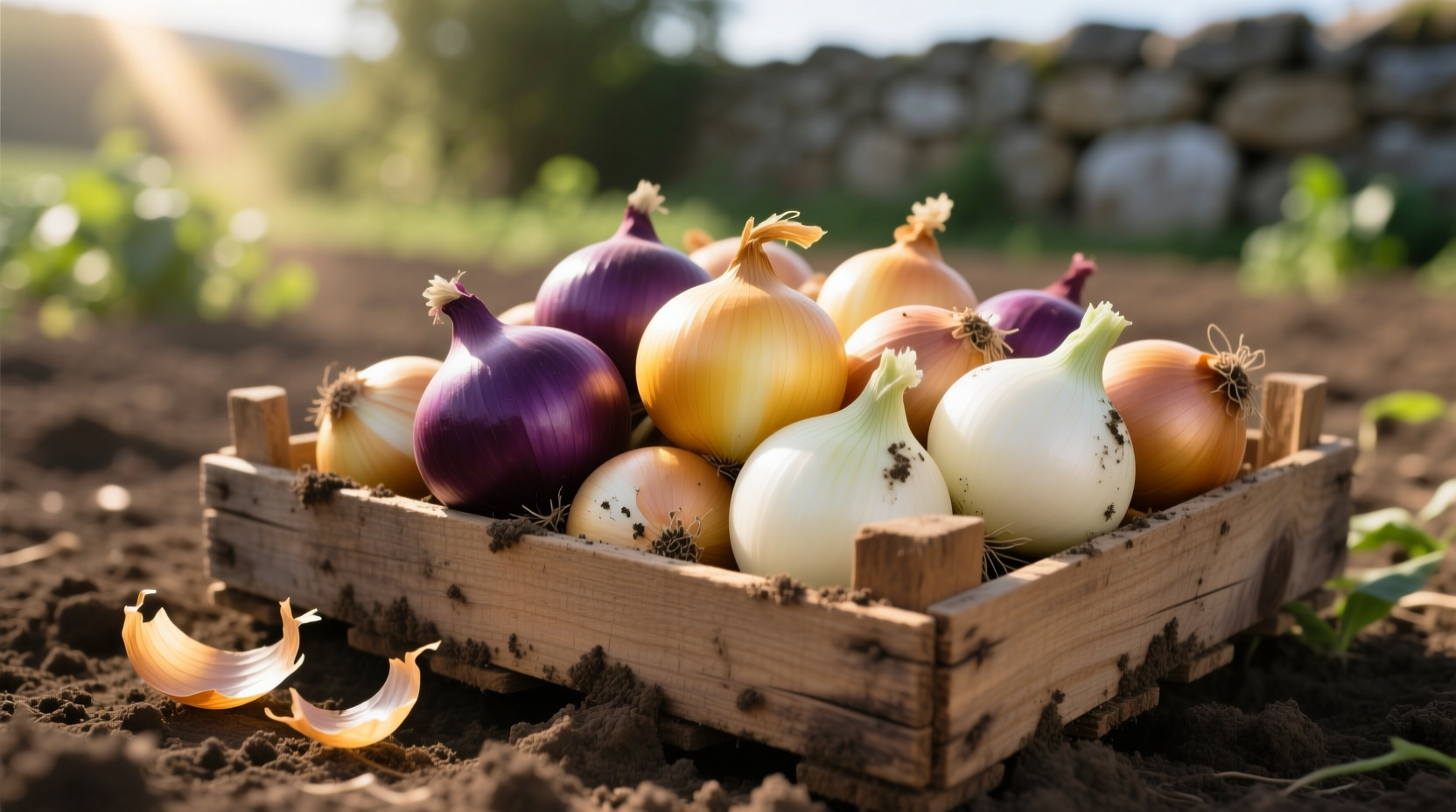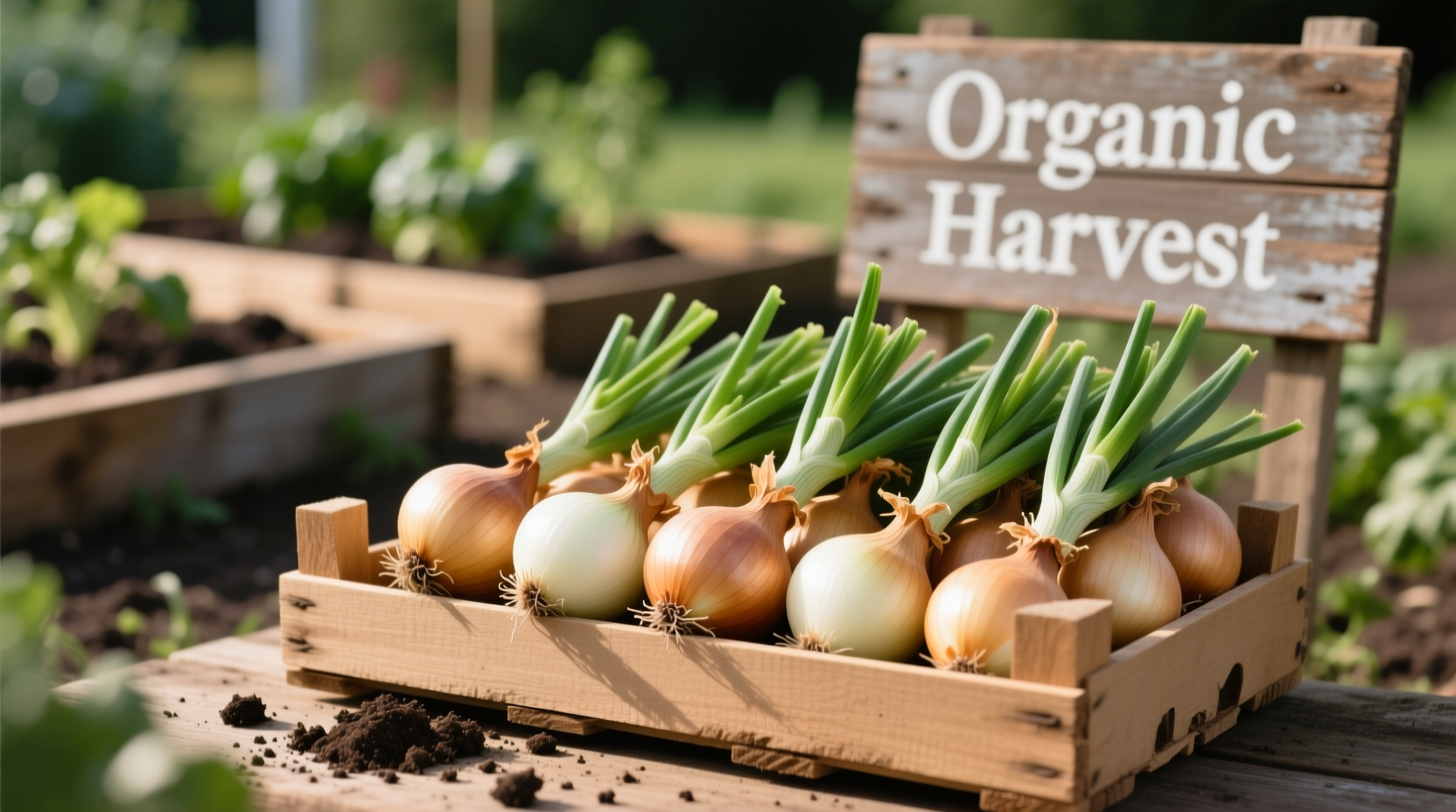Looking to grow your own onions but unsure where to start? Buying onion sets is the simplest method for home gardeners to produce a reliable harvest with minimal effort. Unlike starting from seeds, sets give you a head start with partially developed bulbs that resist bolting and mature faster. This guide provides everything you need to know about selecting, purchasing, and planting onion sets for a successful garden harvest.
Why Choose Onion Sets Over Seeds or Transplants?
Understanding your planting options is crucial before you buy onion sets. Each method has distinct advantages depending on your gardening experience, climate, and timeline.
| Planting Method | Time to Harvest | Difficulty Level | Best For |
|---|---|---|---|
| Onion Sets | 80-100 days | Beginner | Cold climates, quick harvests, gardeners wanting low-maintenance results |
| Seeds | 100-120 days | Advanced | Gardeners with longer growing seasons, those seeking specific heirloom varieties |
| Transplants | 90-110 days | Intermediate | Gardeners wanting larger bulbs, moderate climates |
According to the USDA National Agricultural Statistics Service, onion sets account for approximately 65% of home garden onion plantings due to their reliability and ease of use. The University of Minnesota Extension confirms that sets have a 90%+ success rate for first-time growers compared to 60-70% for seeds.
Top Onion Varieties Available as Sets
Not all onion varieties are suitable for growing from sets. The most commonly available types fall into three color categories, each with distinct flavor profiles and storage capabilities.
| Variety Type | Flavor Profile | Storage Life | Best Growing Zones |
|---|---|---|---|
| Yellow Onion Sets | Strong, pungent when raw; sweet when cooked | 6-8 months | Zones 3-10 |
| Red Onion Sets | Sharp, slightly sweet | 2-4 months | Zones 5-9 |
| White Onion Sets | Mild, crisp | 3-5 months | Zones 7-10 |
For northern climates (zones 3-5), short-day varieties like 'Walla Walla' or 'Sweet Spanish' work best when planted in early spring. Gardeners in southern regions (zones 8-10) should look for long-day varieties such as 'Copra' or 'Stuttgarter' for optimal bulb development. The Cornell University Cooperative Extension recommends purchasing sets specifically labeled for your growing zone to ensure proper day-length requirements.
When to Buy Onion Sets by Region
The timing of your purchase directly impacts your harvest success. Onion sets have a limited shelf life and should be planted within 2-3 weeks of purchase for best results.
| Region | Best Purchase Window | Planting Timeframe | Recommended Varieties |
|---|---|---|---|
| Northern (Zones 3-5) | February-March | 4-6 weeks before last frost | 'Walla Walla', 'Sweet Spanish' |
| Midwest (Zones 5-7) | March-April | 3-4 weeks before last frost | 'Copra', 'Candy' |
| Southern (Zones 7-10) | November-January | Fall planting for spring harvest | 'Texas Grano', 'Red Creole' |
The Agricultural Marketing Resource Center notes that purchasing too early can lead to premature sprouting in storage, while buying too late may miss the optimal planting window. For most temperate regions, late February through early April represents the ideal purchase period for spring planting.
How to Select Quality Onion Sets
Not all onion sets are created equal. When you buy onion sets, look for these quality indicators to ensure healthy plants and good yields:
- Size matters: Choose sets that are ½ to ¾ inch in diameter. Smaller sets (<½ inch) often produce smaller bulbs, while larger sets (>1 inch) are more prone to bolting (premature flowering)
- Firmness test: Squeeze gently—quality sets should feel solid with no soft spots or mushiness
- Skin condition: Look for dry, papery outer skins without mold, sprouting, or green shoots
- Uniformity: Sets should be similar in size for even growth and maturity
The University of California Agriculture and Natural Resources warns that sets showing any signs of sprouting before planting have reduced energy reserves and will produce smaller bulbs. When purchasing online, check seller reviews specifically mentioning set quality and germination rates.

Proper Storage Before Planting
Many gardeners make the mistake of storing onion sets improperly after purchase. Follow these guidelines to maintain viability:
- Store in a cool, dry place between 40-50°F (4-10°C)
- Keep in mesh bags or ventilated containers to prevent moisture buildup
- Never refrigerate sets—cold temperatures can trigger premature sprouting
- Check weekly for any soft or sprouting bulbs and remove them immediately
According to research published in the Journal of Horticultural Science, onion sets stored at optimal conditions maintain 95% viability for up to 4 weeks. However, viability drops significantly after 6 weeks, with only 60-70% producing healthy plants.
Planting Your Onion Sets for Maximum Yield
Proper planting technique makes all the difference in your onion harvest. Follow these steps when planting your newly purchased sets:
- Prepare soil 2-3 weeks before planting with 2-3 inches of compost worked into the top 6 inches
- Plant sets 1-2 inches deep with the pointed end up, 4-6 inches apart in rows 12-18 inches apart
- Water thoroughly after planting, then maintain consistent moisture (1 inch per week)
- Apply balanced fertilizer when plants reach 6 inches tall
- Stop watering 2-3 weeks before harvest when tops begin to yellow and fall over
The Rodale Institute's organic gardening research shows that planting depth significantly affects bulb formation. Sets planted too shallow (less than 1 inch) produce smaller bulbs, while those planted too deep (more than 2 inches) may not develop properly. The optimal 1-2 inch depth balances root development with bulb expansion.
Troubleshooting Common Onion Set Problems
Even with quality sets and proper planting, issues can arise. Here's how to address the most frequent problems:
- Bolting (flowering): Caused by temperature fluctuations or sets that were too large. Remove flower stalks immediately and use those onions first as they won't store well
- Small bulbs: Usually from overcrowding, poor soil nutrition, or incorrect day-length varieties. Ensure proper spacing and fertilize with nitrogen early, then switch to phosphorus and potassium
- Disease issues: Rotate crops annually and avoid overhead watering to prevent fungal diseases like downy mildew
- Pest problems: Onion maggots can be prevented by covering plants with row covers and practicing crop rotation
The National Onion Association reports that proper crop rotation can reduce pest problems by up to 70%. Avoid planting onions in the same spot more than once every 3-4 years to maintain soil health and reduce disease pressure.











 浙公网安备
33010002000092号
浙公网安备
33010002000092号 浙B2-20120091-4
浙B2-20120091-4